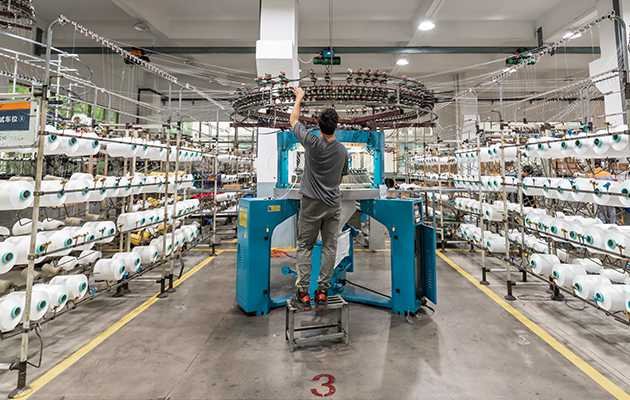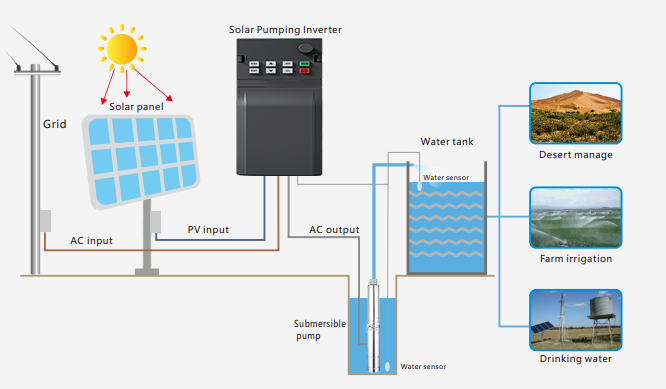1. Introduction: The control of the water supply system ultimately aims to meet users’ demand for flow. During peak periods, there is a large demand and rapid water supply is required; during off-peak periods, a certain pipe pressure should be maintained. The most fundamental control object is flow, and pressure is used as a parameter to control the size of the flow. If the pressure at a certain point in the water supply system is kept constant, it ensures that the water supply capacity and water consumption flow at that point are in a balanced state, thus meeting users’ water consumption needs. Usually, in the same water supply system, multiple common pumps are set up. When the water supply volume is large, all pumps are turned on; when the water supply volume is small, one or two pumps are turned on. When using variable frequency speed regulation for constant pressure water supply, there are two methods. One is to equip all pumps with one inverter; the other is to equip each pump with one inverter. The latter method automatically adjusts the output frequency of the inverter through PID operation according to the pressure feedback signal, changes the rotation speed of the motor, and finally achieves the purpose of constant pressure in the pipe network. It is a closed-loop circuit, which is relatively simple but has a high cost. The former method has a low cost and its performance is not inferior to the latter, but its control program is more complex and it is the future development direction.
1. Control Principles and Schemes
Compared with using regulating valves to achieve constant pressure water supply, using variable frequency speed regulation to achieve constant pressure water supply has a very significant energy-saving effect (which can be calculated according to specific circumstances). Its advantages are:
(1) Smooth starting, and the starting current can be limited within the rated current, thus avoiding the impact on the power grid during starting;
(2) Since the average rotation speed of the pump is reduced, the service life of the pump and valves can be extended;
(3) The water hammer effect during starting and stopping can be eliminated.
Generally speaking, when one inverter controls one motor, it is only necessary to make the motor capacity of the inverter match the actual motor capacity. When one inverter simultaneously controls two motors, in principle, the motor capacity of the inverter should be equal to the sum of the capacities of the two motors. However, if the water consumption during peak load is much different from the full-speed water supply volume of the two pumps, the capacity of the inverter can be appropriately reduced, but sufficient capacity should be reserved.
Although the working current of the motor is small when the pump is running at a low speed. However, when the water consumption of users changes frequently, the motor will be in a frequent state of increasing and decreasing speed, and the current during increasing and decreasing speed can slightly exceed the rated current of the motor, resulting in overheating of the motor. Therefore, thermal protection of the motor is necessary. For the temperature rise accumulated due to frequent increasing and decreasing speed, the electronic thermal protection function in the inverter is difficult to play a protective role, so a thermal relay should be used to carry out thermal protection of the motor.
In terms of main function presetting, the highest frequency should be the rated frequency of the motor as the highest working frequency of the inverter. The increasing and decreasing speed times are adjusted by the built-in PID of the inverter. The increasing and decreasing speed times should be set as short as possible so as not to affect the dynamic response process determined by the PID regulator.
2. Characteristics of Variable Frequency Control
– Energy saving: The optimized energy-saving control software enables the pump to operate with maximum energy saving;
– Water saving: Set the pipe network pressure according to the actual water consumption situation, automatically control the water output of the pump, and reduce the phenomenon of water leakage and waste;
– Reliable operation: The soft start of the pump is realized by the inverter, enabling the pump to switch from power frequency to variable frequency without impact, preventing the impact on the pipe network, avoiding the overlimit of the pipe network pressure and the rupture of the pipes;
– Networking function: Adopt full Chinese industrial control configuration software to real-time monitor each station, such as the voltage, current, working frequency, pipe network pressure and flow of the motor. And it can accumulate the electricity consumption of each station, accumulate the water output of each pump, and at the same time provide various forms of printed reports for analysis and statistics;
– Flexible control: Sectional water supply, timed water supply, manual selection of working methods (the peripheral control circuit is not provided temporarily);
– Perfect self-protection function: If a certain pump fails, it will actively send an alarm message to the upper computer, and at the same time start the standby pump to maintain the water supply balance. In case the automatic control system fails, the user can directly operate the manual system to maintain the water supply






